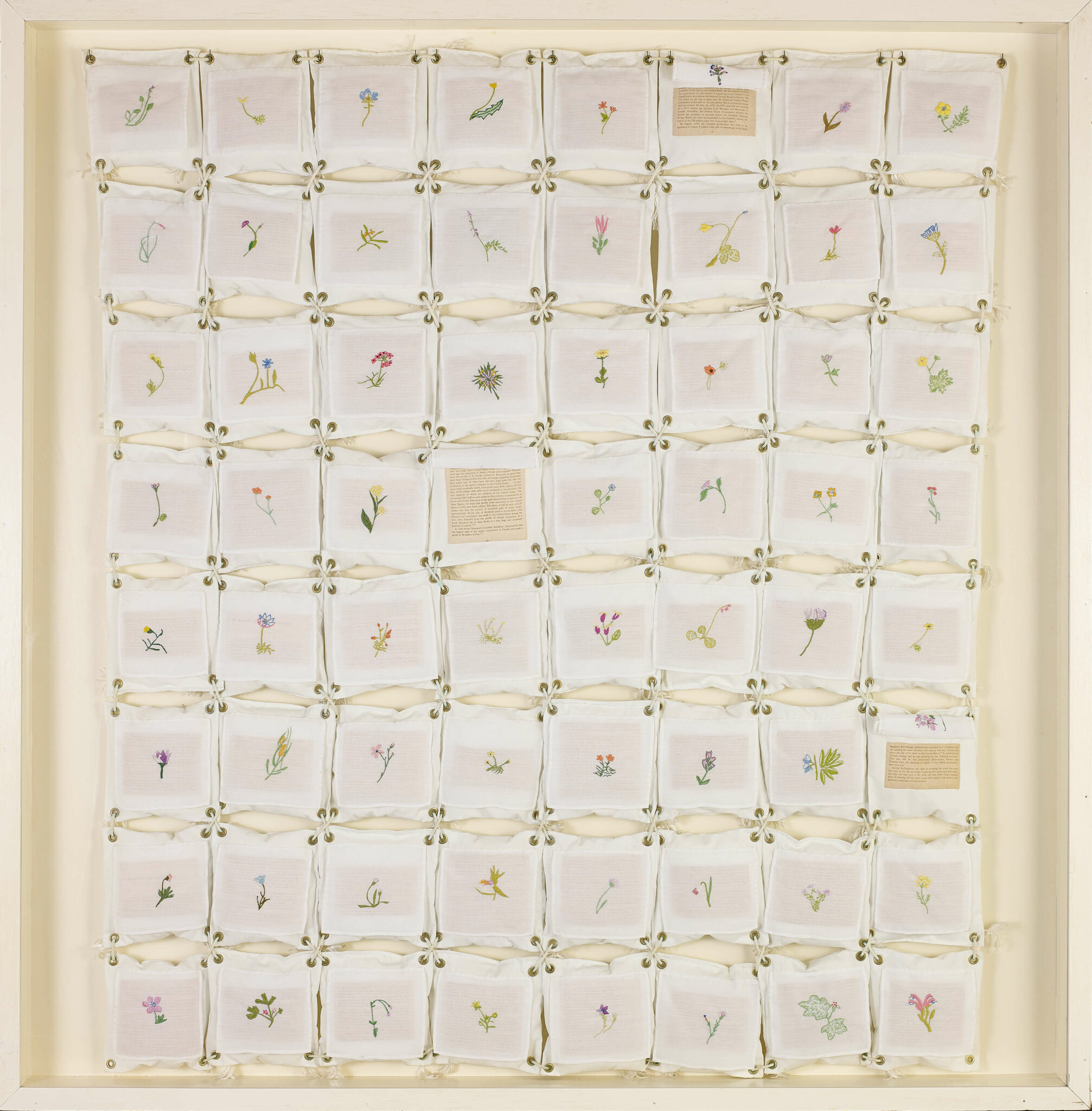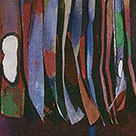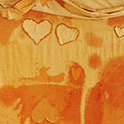The Water Quilt 1970–71

Joyce Wieland, The Water Quilt, 1970–71
Embroidered cloth and printed cloth assemblage, 134.6 x 131.1 cm
Art Gallery of Ontario, Toronto
The Water Quilt was first shown in Wieland’s exhibition True Patriot Love at the National Gallery of Canada in 1971. Wieland called it a quilt, and although it shows evidence of meticulous needlecraft, it differs markedly from a traditional bedcover: concealed within it are the pages of a book. The surface of this fabric assemblage is delicate and decorative, owing to its off-white colour and the little embroidered flowers that adorn its sixty-four squares of cotton. Each of these flowers is a botanically correct rendition of an arctic flower—and the scientific accuracy is important. Lifting one of the fabric squares from the bottom reveals a page of printed text. The pages of text are selections from James Laxer’s The Energy Poker Game: The Politics of the Continental Resources Deal, published in 1970.

Laxer’s book concerns the future of Canadian natural resources; he reports critically on plans by American business interests (as far away as California) to seize control of Canada’s northernmost fresh water and divert it south of the border. Wieland was apparently so alarmed by this possibility, euphemistically referred to as the sale of “bulk water,” that she asked Laxer’s permission to incorporate the book into her artwork. By this time she had grown sympathetic to the Waffle—the furthest left, nationalist group within the New Democratic Party. Laxer was co-founder of the Waffle, as well as one of the authors of the group’s “Manifesto for an Independent Socialist Canada.”
Here Wieland depicts the delicate flowers to suggest an ecologically threatened northern environment, while linking the problem to questions of national sovereignty. This way of understanding and representing landscape was unique among artists at the time. The Water Quilt is also a profoundly interdisciplinary object, in that scientific knowledge (the botanical specimens on display) intersects with economics (Laxer’s analysis) as well as with aesthetics.

 About the Author
About the Author
 More Online Art Books
More Online Art Books
 Acknowledgements
Acknowledgements